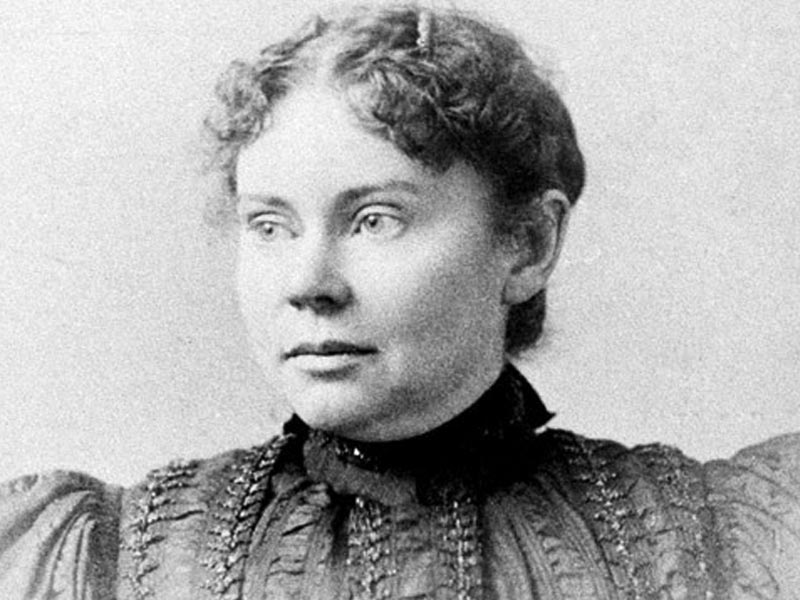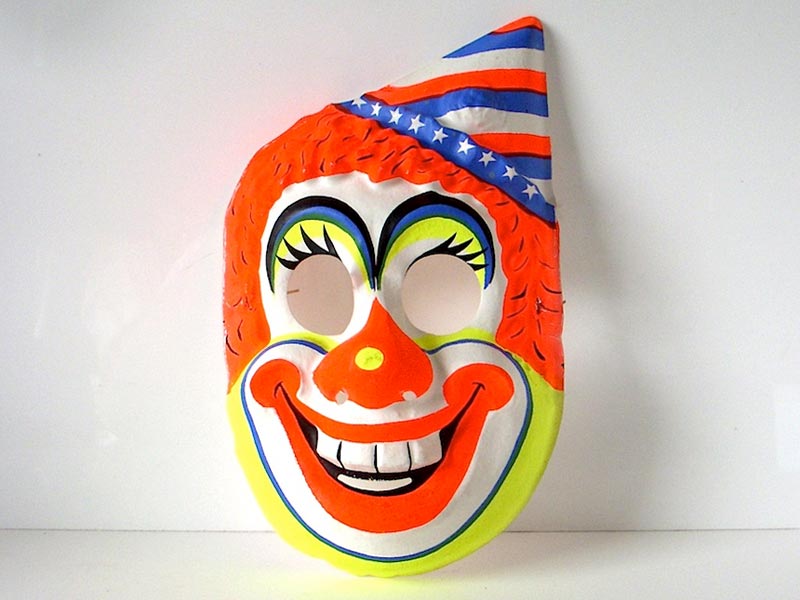In the daylight, there wasn’t much that scared the kids in my quiet suburban neighborhood in the early 1980s. The most we feared were cooties from the opposite sex and earwigs, which were fabled among us kids to crawl into your ear and lay eggs in your brain like those ear worms in Star Trek II: The Wrath of Khan. I lived in the quiet Maplewood section of Fall River, Massachusetts, a town known for its textile mills and Lizzie Borden, a woman suspected of a brutal double homicide in 1800s. Not even the grim details of Lizzie’s alleged murder could frighten us. We recited her story as a rope-jumping rhyme between rounds of hide and seek and hot-potato:
Lizzie Borden took an axe,
and gave her mother forty whacks.
When she saw what she had done,
she gave her father forty-one.

My friends and I would ride our bikes up and down the sidewalks, obeying parental commands to stay on our street. We were allowed to stray only to attend school one street over. As we got older, braver, and more defiant we’d throw all caution to the wind and sneak rides around the block. For me, with all the nighttime shadows put away and in the arms of my decent neighborhood, I felt safe and sound. Until, that is, I became aware of the black van.
The legend circulating in my neighborhood was that men dressed as clowns would troll neighborhoods in a nondescript black van, snatching up children with the lure of candy. We’d grown so accustomed to the neighborhood ice-cream truck (a van-like vehicle, often decorated with clowns and driven by a stranger) calling to us with the promise of appetite-spoiling treats, and we’d flock to it with Pavlovian obedience. The black van tainted this easy trust, and as far as I was concerned the rumors were true as they first came to me from a source that I trusted at the time, my father.
My father is an expert worrier who suffers from post-traumatic stress, having returned from being drafted into Vietnam shortly before I was born. He’d endured terrible and dangerous experiences from which he never fully recovered, relying on alcohol in an ineffectual attempt numb his anxieties. The world remains a scary and dangerous place for him and I could not look to him for help in processing my fears as he was too paralyzed by his own. When exposed to frightening news like that of the black van, he’d pass his fears on to me, like an heirloom. The same year as the black van legends began to circulate, my father informed me of the abduction of Adam Walsh, a boy my age who was kidnapped in Florida. Later, he’d share the subsequent reports of the recovery of Adam’s remains in grisly detail. This was often my father’s modus operandi. So desensitized by the horrors he’d endured in Vietnam, he was unable to discern whether or not a discussion topic was too graphic for a child. In my seven-year-old mind, Adam’s very real abduction and murder served as validation of the possibility of something as awful as the black van.

Schoolyard rumors confirmed my father’s initial report of the van, each with varying details. One in particular involved the clowns throwing firecrackers at children from within the van, which in hindsight seems more of a surreal annoyance than legitimate danger, but it terrified me at the time. These stories, likely an attempt to foster vigilance, did not translate well after bedtime for me. I’d require a nightlight to even consider going to sleep, and would pull the covers over my head, apparently adopting the logic of a house cat, “If I can’t see the boogeyman, the boogeyman can’t see me.”
Missing children bulletins and photographs began to sprout up everywhere, most famously on milk cartons. As we kids enjoyed our bowls of Franken Berry, we’d end up looking into the eyes of kids who were taken from their families, kids who were probably scared and hurt or worse, and certainly unable to enjoy their own bowls of sugary cereal. I recall being particularly disturbed by portraits of the missing kids rendered by police sketch artists depicting how they might have aged since the abduction.
Come October, hearsay of poison, razor blades, or pins inserted into Halloween candy began to circulate. Television news segments dedicated to such dangers perpetuated these rumors and all trick or treat winnings needed to be inspected carefully. My father also warned of temporary tattoos that were marketed for kids being laced with hallucinogenic drugs. I began to see danger at every turn. Long after Halloween, I’d worry that my candy was contaminated, that all black vans were brimming with evil clowns itching to kidnap me, and that my temporary Popeye tattoo would send me spiraling down the rabbit hole. These fears of contamination and ruminations were enhanced by my, yet undiagnosed but surely budding, obsessive-compulsive disorder.
Highly publicized child abductions like that of Etan Patz, a six year old from New York, and Adam Walsh, whose father rallied tirelessly to find his son, sparked the missing children’s movement of the 1980s. The changing news media lanscape of the 1980s began to widely publicize such cases. The coverage rode a fine line between information spread in the interest of public awareness and sensationalism. Ultimately, this public awareness was beneficial in the recoveries of some missing children and the prosecution of their abductors, but not without the side effect of mass hysteria. The black van phenomenon was almost certainly was a product of this hysteria. Hysteria is, after all, the mother of urban legend.

The legend of the black van began in 1981 when authorities in Boston, Massachusetts and surrounding cities received numerous reports of a men dressed as clowns trying to lure children into a black van with the promise of candy (though there’s no candy that would get me to approach a clown, never mind ride in a carpool lane with them, so I guess I was safe in that respect). Incidentally, a year before reports of the black van surfaced, John Wayne Gacy, a serial killer who preyed on children and adolescents, was convicted and sentenced to death. Gacy’s persona as “Pogo the Clown,” a character he embodied for community fundraisers and children’s events, earned him the nickname of “The Killer Clown.” Perhaps the clowns of the black van were the boogeymen offspring of this true-life horror. It’s easy to imagine a scenario where a young child might fabricate a story about malevolent clowns after being exposed to the news of Gacy’s conviction. Reports of the black van spread throughout New England and even began to surface in various other cities across the country. The only witnesses to the black van occurrences were by small children and no clown-filled black van was ever apprehended relegating the phenomenon to urban legend. With a broadening public concern in the welfare of children and growing mistrust in which kids were being taught to avoid talking to strangers, fables like the black van and poisoned candy were inevitable. In the changing social landscape of single parents and latch-key kids, they served as contemporary parables. But I have to wonder if they did more harm than good at times.
As we mature and venture out into the world, we all learn to recognize the potential dangers around us and learn to appropriately discern them. For most, this is normal developmentally to ensure safety in an often scary and unpredictable world. However, this development is trickier when the adults that you look to for cues are freaking out. For me, these fears were amplified by a genetic predisposition for anxiety intolerance and an overly anxious parent who transferred his own fears onto me. Though I survived a childhood unscathed by wicked clowns, poisoned candy, or LSD laced temporary tattoos, I did not escape the ideas of them. I still over-scrutinize candy bars looking for clues of tampering. Often, I’ll imagine that air bubbles in the chocolate are hypodermic needle insertion points through which poison was injected into my candy. These ruminations don’t prevent me from eating the candy, but they do contaminate the experience.
Do any urban legends from childhood still creep you out?

Talk Junk